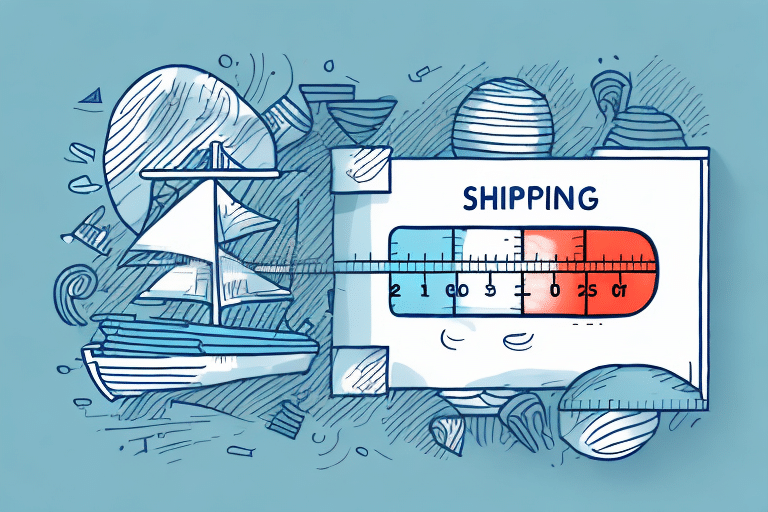What Is Dimensional Weight? An Overview of the Shipping Metric
Shipping is an essential part of commerce, and many businesses rely on it to ensure that their products reach their customers on time and in good condition. When it comes to shipping, weight is a crucial factor that determines the cost, but it's not the only one. Dimensional weight is another metric that shipping companies use to calculate the cost of shipping, and it's something that every business that ships packages should be aware of. In this article, we will provide an overview of what dimensional weight is, why it matters in shipping, and how businesses can calculate it accurately.
Why Dimensional Weight Matters in Shipping
Dimensional weight, also known as volumetric weight, is a metric that shipping companies use to calculate the cost of shipping a package based on the package's size rather than its actual weight. This metric ensures that businesses are billed for the actual space their packages occupy rather than just their weight. This billing method encourages businesses to optimize their packaging and reduce packaging waste, ultimately leading to more sustainable shipping practices.
How to Calculate Dimensional Weight: A Step-by-Step Guide
Understanding the Formula
The formula for calculating dimensional weight varies depending on the carrier, but it generally involves multiplying the length, width, and height of the package in inches and dividing the result by a dimensional factor. The dimensional factor used by most carriers is 139, although some use a different factor.
Example Calculation
For instance, consider a package that is 12 inches long, 10 inches wide, and 8 inches tall. The total cubic inches of this package would be 960 (12 x 10 x 8). Dividing this by the dimensional factor of 139 gives a dimensional weight of approximately 6.91 pounds. If the actual weight of the package is lower than the dimensional weight, the cost of shipping is typically based on the dimensional weight.
Why Carriers Use Dimensional Weight
Carriers use dimensional weight to account for the space a package occupies on a truck or plane, rather than just its actual weight. This is especially relevant for larger, lightweight packages that take up significant space but do not weigh much. By using dimensional weight, carriers ensure they charge a fair price for the space a package takes up.
For more detailed information on dimensional weight calculations, refer to the UPS Dimensional Weight Guidelines or the FedEx Dimensional Weight Policy.
The History of Dimensional Weight and Its Importance in Modern Logistics
Dimensional weight has been utilized in the shipping industry since the 1930s with the rise of airfreight. Shipping companies realized the need to charge for the space packages occupied on airplanes, not just their weight. As logistics technology has advanced and the volume of packages has increased, especially with the growth of e-commerce, dimensional weight has become even more critical in modern logistics.
Understanding the Difference Between Actual Weight and Dimensional Weight
Actual Weight
Actual weight is simply the weight of the package as measured on a scale.
Dimensional Weight
Dimensional weight is calculated based on the package's size using the formula mentioned earlier. Shipping companies use the higher of the actual weight and dimensional weight to determine the shipping cost.
It's essential for businesses to consider both the weight and size of their packages to determine the most cost-effective shipping method.
How to Avoid Surprises: Tips for Accurately Estimating Dimensional Weight
Use Dimensional Weight Calculators
Many shipping companies provide dimensional weight calculators on their websites. Utilizing these tools can help businesses estimate shipping costs accurately.
Optimize Packaging
- Use lightweight materials.
- Eliminate unnecessary packaging.
- Choose the right box size to minimize excess space.
Stay Informed on Carrier Policies
Different shipping companies may have varying dimensional factors and policies. Regularly reviewing these can help avoid unexpected charges.
Refer to the USPS Dimensional Weight Guidelines for more information.
The Benefits of Using Dimensional Weight for Shipping
Cost Efficiency
Billing based on dimensional weight ensures businesses pay for the actual space their packages occupy, promoting better packaging practices and cost savings.
Environmental Sustainability
Optimizing package sizes reduces packaging waste, contributing to more sustainable shipping practices.
Improved Budgeting
Accurate dimensional weight calculations help businesses budget for shipping costs more effectively, avoiding unexpected fees.
Enhanced Customer Satisfaction
Efficient packaging ensures products arrive in good condition with minimal damage, leading to fewer returns and exchanges.
Common Misconceptions about Dimensional Weight and Their Solutions
Misconception: Dimensional Weight is a Trick to Increase Costs
Dimensional weight is a legitimate metric that reflects the actual space a package occupies. It ensures carriers are compensated fairly for the space their packages take up.
Misconception: Only Lightweight Packages are Affected
Both heavy and lightweight packages are subject to dimensional weight calculations. It's crucial to measure and calculate dimensional weight for all shipments.
Mitigation Strategies
- Invest in packaging materials that are lightweight yet protective.
- Choose appropriate box sizes to minimize excess space.
- Work with carriers that offer transparent pricing and clear dimensional weight policies.
How Carriers Use Dimensional Weight to Determine Shipping Costs
Shipping carriers use dimensional weight to ensure they are compensated for the space a package occupies. The cost is typically calculated by taking either the actual weight or dimensional weight of the package, whichever is higher, and multiplying it by the carrier's shipping rate.
For detailed carrier-specific policies, refer to the FedEx Dimensional Weight Strategy or the UPS Technical Support on Dimensional Weight.
Dimensional Weight vs Freight Class: Which Is Right for Your Business?
Freight class is another metric used by shipping companies to determine shipping costs, based on factors like density, stowability, handling, and liability. While dimensional weight is typically used for smaller packages, freight class is often applied to larger shipments. The appropriate metric for your business depends on the size and weight of your packages, the shipping carrier you use, and other specific business factors.
Learn more about freight classes on the Fraser Research Freight Class Guide.
The Future of Dimensional Weight: Trends and Predictions in the Shipping Industry
The shipping industry is continuously evolving, and so are the metrics used for calculating shipping costs. Trends indicate a move towards more accurate and sophisticated dimensional weight calculations to accommodate the increasing demand for small package shipments. Additionally, there is a growing emphasis on sustainable shipping practices, making dimensional weight a crucial tool in encouraging businesses to optimize their packaging and reduce waste.
Industry reports from sources like the Logistics Management provide deeper insights into these trends.
The Impact of Dimensional Weight on E-commerce Businesses
E-commerce businesses heavily rely on shipping, making an understanding of dimensional weight essential. As small packages become more prevalent, accurately calculating dimensional weight helps businesses avoid unexpected shipping costs and optimize their packaging. This optimization not only reduces costs but also contributes to a more sustainable e-commerce industry by minimizing packaging waste.
Common Challenges in Dealing with Dimensional Weight and How to Overcome Them
Accurately Estimating Irregularly Shaped Packages
Irregularly shaped packages can be challenging to measure accurately. Using a dimensional weight calculator provided by the shipping company can help ensure precise calculations.
Optimizing Packaging Sizes
Reducing package size without compromising the integrity of the contents is crucial. Businesses can achieve this by:
- Choosing the right box size.
- Using lightweight yet protective materials.
- Eliminating unnecessary packaging components.
Case Studies: Companies that Improved Their Shipping Efficiency by Using Dimensional Weight
Several companies have enhanced their shipping efficiency by optimizing their packaging and accurately calculating dimensional weight:
- Company A: By switching to smaller boxes and removing excess packaging, they reduced their dimensional weight by over 50%, resulting in significant shipping cost savings.
- Company B: Utilizing a carrier-provided dimensional weight calculator allowed them to avoid unexpected shipping fees and better budget their shipping expenses.
In conclusion, dimensional weight is a crucial metric in the shipping industry that businesses should understand to optimize their packaging, reduce waste, and avoid unexpected shipping costs. By learning how to accurately calculate dimensional weight, businesses can budget more effectively and choose the most appropriate shipping methods. With the growing demand for small package shipments, mastering dimensional weight is increasingly vital for businesses that depend on shipping.




















